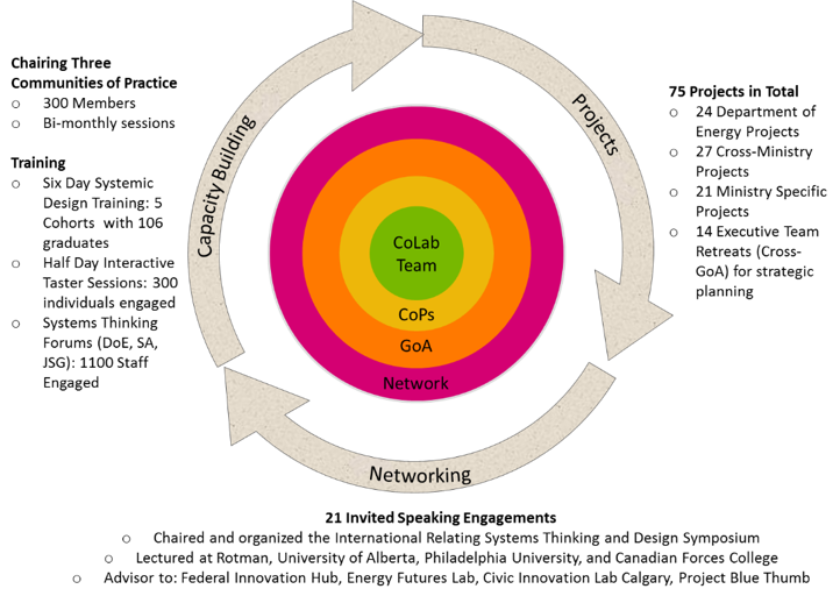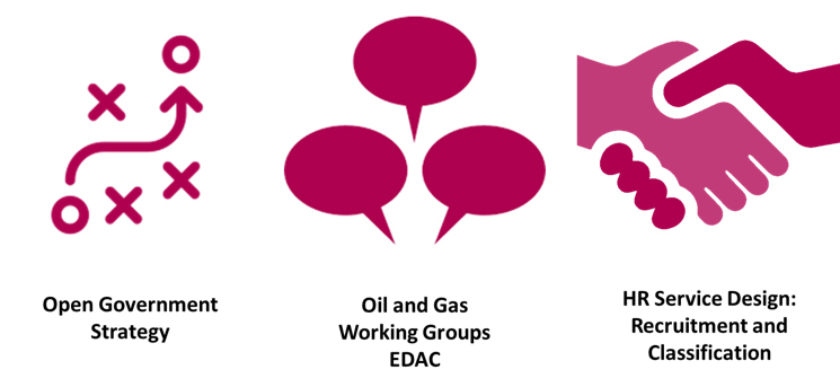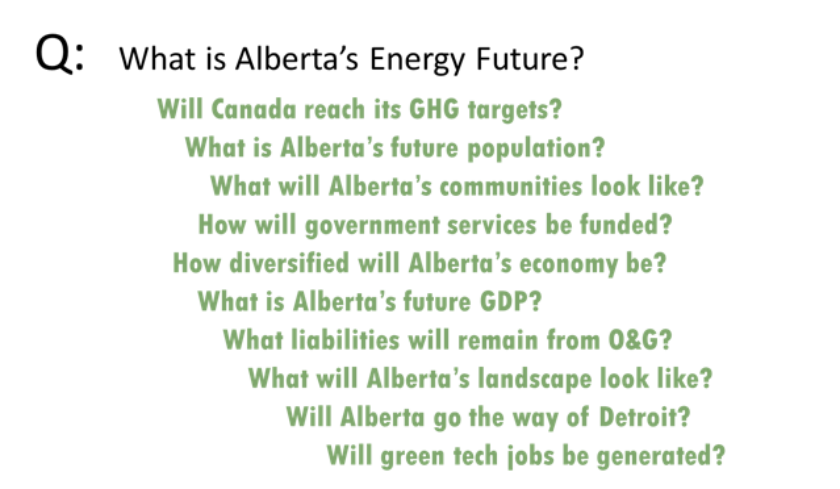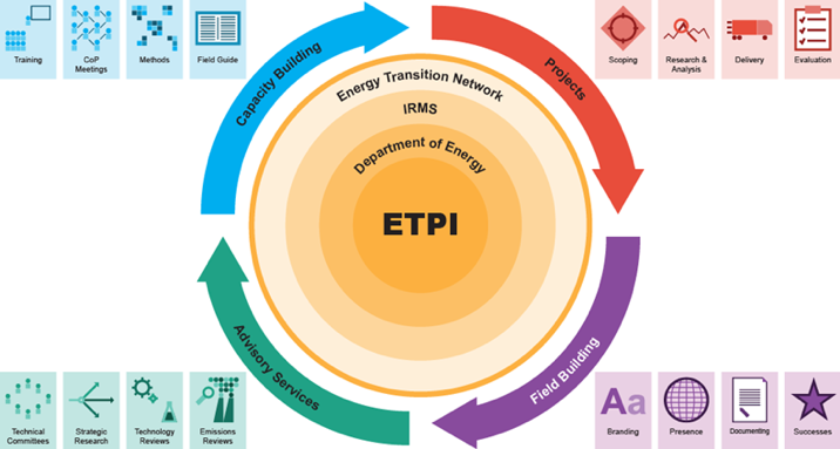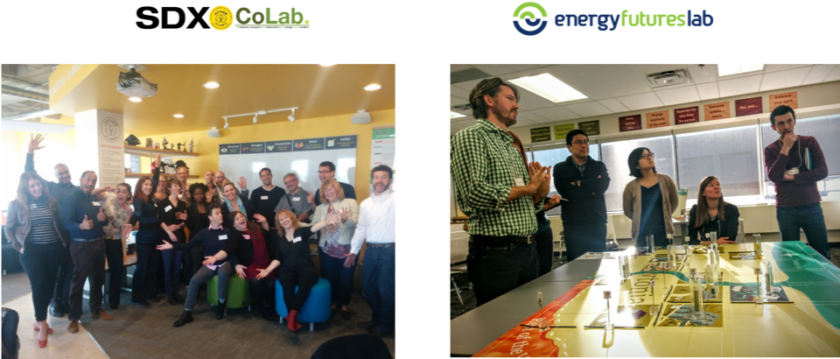Five years after its launch, Alberta Colab director Keren Perla reflects on how at the height of its success, the lab decided to reinvent its business model. This article was originally posted on Keren's Medium, view it here.
Perhaps you’ve also been there: at the beginning of something new; bold and fearless in the face of opposition and hopeful at the possibility of sparking real change.
This is very much where we were in 2014, when the stars aligned and the Government of Alberta officially launched the Alberta CoLab — one of the first Public and Social Innovation Labs (hereafter Labs) in Canada.
Two years later, co-founder and good friend Dr. Alex Ryan penned the Alberta CoLab Story in which he openly reflects on the creation of a government-wide service for systemic design and foresight. He also reflects on the highs and the lows faced by the team working to integrate a counter-intuitive and counter-cultural approach to policy development into a bureaucratic world of risk-based approvals, results-based budgets, and efficiency gains. It’s an insightful piece outlining what made the CoLab unique and its early impact.
Today, the Alberta CoLab continues to function as permanent government design team, but “by design” it does so with a dramatically different focus and mandate. This is a three part retrospective that looks back on the past five years of the CoLab and examines why, at the height of our success, we went back to the drawing board to reimagine it all over again.
Part One: On launching and being unfettered by convention
Much has been written about how pushes to better engage citizens, digitize services, and bring new approaches into policy development have led to the skyrocketing number of Labs (there are now over 50 labs in Canada alone). However, the launch of a Lab is often due to a convergence of conditions that are wholly unplanned for and much more internal. For CoLab, the recipe looked like this:
- A savvy group of highly influential executives looking for a way to break seemingly unavoidable trade-offs between development, the environment and community interests.
- A public service tired of systems thinking and wanting more systems doing.
- An unprecedented number of multi-ministry initiatives battling a siloed inheritance.
- An opportunity to bring in top-level external talent to develop a new concept.
- Funding from Alberta Energy to provide a team, a custom space and yes, new furniture.
While this smoothed the pathway, the rest was very much our playground to explore. Where would the Lab fit in government’s policy development process? Would we be responsible to investigate and provide new insights and ideas for a given challenge? Was there a high value area to focus our efforts? How would a Lab be involved in program delivery?
"I feel that your ambition should always exceed the budget. That no matter what you’re doing you should dream bigger… and then it’s a matter of reigning it in to reality."
In these early days, the lack direction was probably the ideal set up because it allowed us to cultivate a grassroots design for the Lab — mandate, scope, process, even mascots — with minimal overhead. We set up CoLab in the Department of Energy — an unexpected place to put an innovation Lab — because that’s where key champions and resources were. Because we were interested in systems and culture change, we chose not to limit the scope of Lab projects to the Department of Energy, but to open up the Lab’s capability to all departments, and to prioritize challenges that straddled multiple departments.
We branded as an in-house consultancy, prolific in three streams of work that included projects, capacity building initiatives and thought leadership — all in an effort to simultaneously raise the profile of these practices and suss out what worked and didn’t for the public sector palette.
Yet, what most distinguished the initial concept from other innovation initiatives at the time was the aspiration for CoLab to forgo a model about doing things better and faster. In a world of unprecedented change, CoLab was intended to equip government with the ability to harness the power of disruption to identify new ways of doing business and spark transformational change.
And it worked — at least as a first push. By 2016, The CoLab had successfully entered the collective consciousness of the public service. We had both brand awareness and a solid reputation as creatives and strategists who could help catalyze high impact ideas.
The visionary among our executives were pleased. But even they could not deny the practical realities of big organizations, and a year after the Alberta CoLab Story went live our practical realities came calling: key champions had moved to new roles and future ones had yet to be exposed to so-called Labs. To complicate things further, the fiscal tides had turned and the pressure was on to demonstrate value within a narrowing budget.
When things are stable, having a deep understanding of one’s own business model may not be top of mind, but its importance cannot be overstated for Labs. Having a good handle on your value proposition, client segments, channels for reaching and supporting clients, and integration points into the larger organization will help you make informed decisions to not just defend against changes but take advantage of them.
All of this to say that the actual delivery of work is only part of the job for Labs, because for long-term longevity the onus is actually on the Lab to decode the signals of organizational change and identify how these should be met rather than waiting for direction.
Part two: The thing about water and diamonds
Contrary to the stereotype that big government is stable and unchanging, internal dynamics and leadership can change often and unpredictably, meaning relevance is time-dependent. New leadership needs time to understand and accept the value of new or different ideas, and unsurprisingly, leadership transitions inevitably bring questions about a Lab’s value to the organization.
While the need for government to innovate in a rapidly changing world may seem obvious, if you’re in the hot seat of public sector innovation, riding out the waves of change — be it budgets, election cycles, etc. — means you must continuously contend with a paradox of value. Historically speaking, the “paradox of value” is the notion that things that are crucial or critical to life, such as water, are often seen as having less value than other goods, such as diamonds.
To this day, there continues to be disagreement about how this notion of “value” is created — from the amount of effort that goes into acquiring something, to its scarcity, to its view as a social necessity — the underlying point being that value is subjective and coloured by the vantage point.
To this end, I am not suggesting that innovation entities like Labs are akin to life-giving water, but that what Labs see as value is not necessarily what carries the day in political organizations. What Labs identify as their value proposition — things like collaboration, creativity, new ideas, systems change — is eclipsed by a skewed risk-reward paradigm.
At worst, this paradox may lead to a view that Labs are incompatible structures in government; at best Labs can enable long-term gains that often fall short of the immediacy and urgency of core business, issues management, and maximizing returns.
"The googly thing to do is launch early and then iterate. The beauty of experimenting in this way is that you never get too far from what the market wants. The market pulls you back."
Even if you are of the view that the world today has reached the state of “Peak Lab,” it is important to remember that Labs are still very much in the startup phase of development — a dominant model has yet to emerge. And even though Labs are highly diverse and everyone has their own unique story, there are two key things to keep in mind:
- First, as an innovation initiative, you have been likely stood up to challenge business-as-usual offerings and so — by design — you will create friction within government.
- Second, the short-term nature of government innovation agendas at a leadership level, in combination with the evolving innovation needs of the bureaucracy, makes it nearly certain that you will need to rethink your business model every few years if you are to survive and thrive.
How you adapt your model will be defined by how far you are willing to go to resolve your value paradox and make what you do credible and appealing to the people you work with.
As a general observation, the closer a Lab is tied to core business, the more they are tied to incremental change and yet core business is a generally a stable high-value play. Distance from core business provides a certain amount of freedom to pursue disruptive innovation, but distance then makes it more difficult to integrate disruptive innovations into the core. It therefore begs the question: how far can you adapt your business model and still remain authentic to the intent of being a Lab?
Part Three: The CoLab is dead. Long Live the CoLab
Changing a formerly successful business model is always tough. You naturally worry that you’ll wind up in a worse place, but if you don’t make a change you’ll miss out on opportunity.
CoLab had become in the eyes of many a successful model of public sector innovation: ministry clients were happy; demand for services outstripped capacity; and other departments and governments were imitating CoLab’s model. But after three years of operating as an in-house consultancy, we were starting to plateau.
There are many reasons why plateaus show up. For us, a government-wide push to demonstrate value had ultimately resulted in a revolving door of workshops, design sprints and idea-handoffs with marginal external-to-government impact. It also meant that our focus was largely outside the interests of executive sponsors at our home ministry — Alberta Energy. So while initially supportive of our approach, our lynch-pin sponsorship was several degrees removed from the majority our work.
By the time these dynamics had created unmovable roadblocks impeding our path to true impact, the department was facing a period of organizational change and we were again an unknown quantity. The indicators were there to take a step back, evaluate our strategy and be creative.
"You have to respect your audience. Without them, you’re essentially standing alone singing to yourself."
For innovation to work in and for government, it needs to somehow become part of the DNA of the organization. Reinforcing our own hooks meant focusing on the needs of our untapped energy client base, and transitioning from being a strategic service to a strategic resource.
We found a strategic niche
“What will our energy future be?” is a particularly poignant question for resource-rich jurisdictions like Alberta and Canada. That the global economy could see a shift away from systems based on fossil fuels was, at the time, seen to be decades away, with no immediate imperative to address. But disruption — be it technological, social, political, or economic — knocks on everyone’s door eventually.
Not only did the CoLab identify this as a gap critically connected to the work of the department, the level of uncertainty and complexity necessitated a more futures-oriented, systemic, participatory, and intentional approach — a way of working intrinsic to innovation Labs. In 2018, the CoLab’s role in this space was formalized and the team became known as the Energy Transition and Policy Innovation team for energy clients.
We built depth
In the beginning, volume and scale were critical for demonstrating what Labs could do on complex public policy challenges. But being a platform for energy transition opened up a new frontier, one where CoLab could provide not just expertise in innovation processes, but serve as domain experts for transition and the pivotal intersection of emerging technologies and social innovation.
To crystallize this potential, the CoLab basically went from supporting thirty projects a year to three: each pitched, designed and led by the team. The ownership of projects — something not fully possible in a client service-model — has been key for addressing the tendency for projects to lose momentum and lose design intent once they left the Lab. As owners, we were positioned to better steward an innovation through government policy development processes while maintaining design fidelity.
We broke free of the workshop
Over time, the work of the CoLab had become synonymous with co-design workshops and engagement sessions. While this association became a clever “Trojan Horse” for making foreign things — like systemic design and foresight — familiar and acceptable to potential adopters, it ultimately constrained much of the work brought to the Lab. Many in the lab space will utilize a “Trojan Horse” of some sort, but failure to evolve beyond what is familiar and acceptable can result in your true value proposition going unnoticed.
To maximize the full potential of a Lab approach and the skill-set of the CoLab concept, we stood down from one-off engagements and took on only those projects where CoLab could lead a robust approach, including technical scenarios, modelling quantitative and qualitative analysis, user-research, and whatever else the future may hold.
We became part of the business life-cycle
I like to think that governments, like natural organisms, live and breathe according to regular cycles: the rise and fall of budget cycles, the ebb and flow of setting priorities, the rush and lull of annual reporting. These cycles are routine and ingrained. Because the CoLab was now heads-down delivering three lab projects, it was critical to establish a way to maintain regular visibility with department leadership. Given our reputation for dealing with complexity and navigating uncertainty, leading the strategic planning process for the department was a natural fit.
Moreover, by adapting our department’s strategic planning process to be run as a Lab, discussions on disruptive trends, systems transformation and unlikely scenarios is now increasingly part of regular business.
We became an inside/outside partnership
When it comes to Labs, there is no “best” place to be. Inside government, outside, or on the edge — each placement brings strengths and obstacles, including structure, process and culture. Labs inside government have “insider access” to information and decision-makers, while those at arms-length are generally more nimble and autonomous.
Creating connective tissue between Labs diving into similar spaces provides more than just a learning opportunity for Labs. Inside/Outside partnerships allow Labs to benefit from each other’s strength and amplify the reach of a Lab’s work overall. Structures are often slow to change. So as a Lab on the inside, opening our doors to the broader ecosystem of Labs continues to be instrumental to maneuver around some of our toughest obstacles, including accessing and working directly with citizens and stakeholders.
A final note
There are two ways to adapt your business model: you can wait until external factors force you to change, or you can initiate the change.
In our experience, a proactive, self-directed orientation to change enables more long range thinking and innovation that, ultimately, builds better stability for new concepts. This means start-ups like Labs must always have at least one eye on what their next move might be. And this is a good thing for a number of reasons. Labs begin their lives on the margins of big organizations, and it is only through the exercise of business model innovation that we can develop next generation Lab practices.
That said, the time to change your business model isn’t when times are bad or midway through a crisis. As a concept still earning your stripes, “next-gen” analysis is what Labs need to do when they’re thriving, so that they are ready with a vision and solid rationale when opportunity hits.
For Alberta CoLab, adapting our business model allowed us to create greater impact, build stronger internal support, and integrate the Lab’s work into the core of our supporting ministry. It was a much-needed risk that is starting to reap reward, but a risk nevertheless. So, if your world sounds similar to ours and if you’re ready to figure your next step, asking yourself a few simple questions can help you gather the right data, test your assumptions and make this step a calculated one. Ask yourself:
- How might we evolve our business model to create value that is worth breaking with the status quo?
- Do we need a subtle or radical overhaul to enable better impact? Are there small, low risk things we can do that are worth doing?
- Is this shift something our current or future clients can see the rationale behind, as a potential destination, or is this going to be too much of a leap?
- Do we have the capacity and skills to grow and shift in a new or different way?

